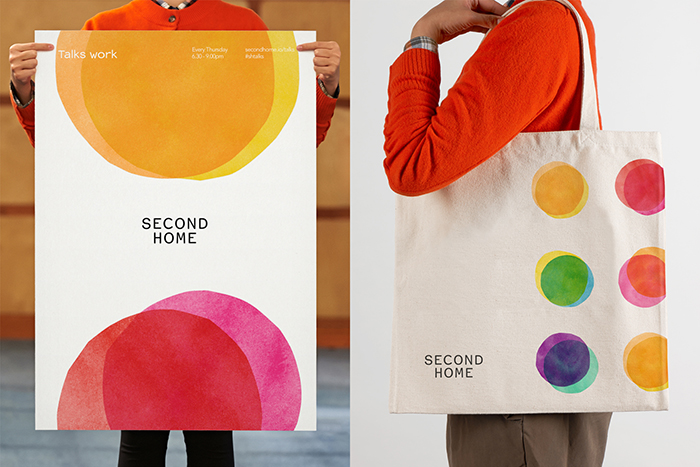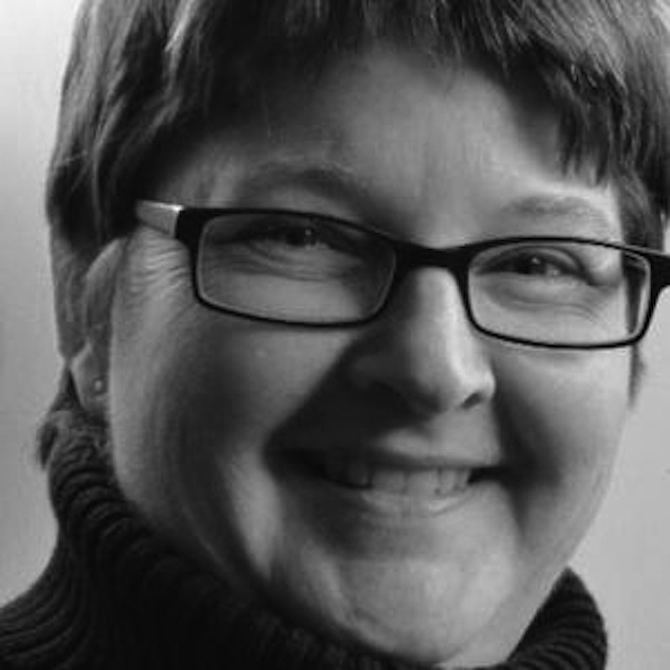Marina Willer is a graphic designer and filmmaker with an MA in Graphic Design from the Royal College of Art. She was head creative director for Wolff Olins in London where she was responsible for major identity schemes. She is now a partner in Pentagram, and a member of AGI (Alliance Graphique Internationale).
As part of a week of posts celebrating the GraphicsRCA: Fifty Years exhibition, Teal Triggs interviews Marina about her need for collaboration and designing beyond mere form.
Teal Triggs: What prompted you to apply to the RCA in the early ’90s for a postgraduate education?
Marina Willer: I was working as an art director in advertising in Brazil. I was making a lot of money and was very bored. I wanted to start all over again. Change my life. Turn it upside down. The RCA was the perfect choice for that.
The RCA invites students to open up the horizon, thinking about design as ideas much beyond style or form. You create a concept and it practically designs itself. Then you think of what media, how you will craft as that is lead by the concept. That’s where the mix of disciplines is so important. Where using all of the studios and collaborating with other areas becomes so important and rich.
You start as a designer and come out as a filmmaker, artist, or performer. It’s wonderful. Or you use all that to enrich your work. The way I ended up approaching a project we did with Margaret Calvert, for example, totally inspired me later as a designer to create the identity for Tate Gallery, by creating an installation that I photographed and filmed every day. I ended up creating a series of logos in a way that could never have achieved by sitting by my computer. We are encouraged at the RCA to approach things in a fundamentally different way, that helps us create work that is truly individual.
TT: You have chosen a slightly unusual career path for an RCA graduate. There is a long tradition of graduates setting up small studios or setting up as solo practitioners, but you chose to work for Wolff Olins, one of the giants of global branding, and now you are a partner in Pentagram. Did you consider the independent or solo route?
MW: I never liked working on my own. I love collaboration. I love people. I think Wolff Olins was interesting for the ideas side. I always liked creating holistic systems and narratives. So I thought I’d learn from them. And once I joined I was lucky to win exciting work like the identities for Tate Modern, the Schaulager Museum in Basel, Amnesty International, Macmillan Cancer Support, and other things that kept me for longer than I imagined. Also, I built a creative team that I was really proud of. At Pentagram I feel like I have a start up. Every team is a small company with total independence but with the creative push of a great network of people. I feel surrounded by so much talent here.
TT: What was the state of graphic design teaching and learning when you were at the RCA?
MW: It was very open to the student to make his/her own program, but with great input and inspiration from a few figures that left a big mark, such as Margaret Calvert. There was a fluid program of talks and the beginning of an interesting multidisciplinary view of the world, a great crossover between studios.
TT: Since the 1980s, art practice and art theory has been widely adopted by RCA students—were you influenced by this?
MW: Yes, very much. To me the writing and thinking behind my thesis hugely influenced my practical work. But I felt that in general there was not enough connection between theory and making. That the thesis was a bit of an add-on to the rest of the work.
I was writing about art and politics. How design had lost its political and social place in most current trends. I come from Brazil, where I spent my under graduate years doing a lot of human rights work and all that was an integral part of growing up in a country that had a strong dictatorship and still has huge problems with inequality today. The work I did on my thesis influenced my contribution on jobs such as the identities for Amnesty, Oxfam, Macmillan Cancer Support, and a lot of other social work since then.
TT: Today, you are a Pentagram partner in London with responsibility for hiring your team—what do you look for in a graphic designer?
MW: First, I look for great thinkers, curious people who are interested in what is happening in the world and can see thing laterally. People who have imagination and want to do more than just conform. I also look for people who can craft and do unusual work. People who are generous and like to collaborate. I can’t work with aggressive or competitive individuals. It’s not for me. We work together; it’s the only way. It’s about friendship and it’s fun.

Second Home, identity

Tate Modern, identity

